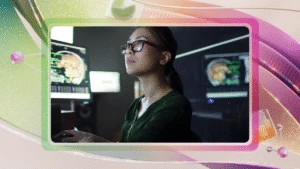
Microsoft for Healthcare: new people, products, and partnerships

In healthcare and life sciences, advances in research and technology development are providing a deeper understanding of human health and leading to more effective ways to prevent and treat disease. At the same time, the shifting landscape of the business of healthcare, including changes in policy and new business models, has created disruption and uncertainty for health providers, insurers, and, most of all, for patients.
At the heart of both this promise and this uncertainty is data. Twenty years ago, much less than 20 percent of healthcare records existed in digital form. Today, that number stands at better than 98 percent – a remarkable digitization of an entire industry. This massive shift to digital creates an opportunity to use cloud computing, AI, and a host of other advanced digital technologies to usher in a new era of profound and powerful insights about human health. But to realize this opportunity, we need to make all that data usable.
It’s relatively easy to find interesting datasets that may contain important insights for human health. People and organizations engage with us every day to explore promising ideas about how to turn their datasets into better outcomes, better experiences, and lower costs. The potential is pretty amazing, but converting these opportunities into action is surprisingly difficult and time-consuming. There are still many barriers that must be overcome before the impact of AI can be made real, including information systems that are difficult to manage, incompatible data standards, inconsistent privacy regulations, and conflicting commercial incentives.
One of our most important commitments is to work with partners from across the healthcare industry and in governments to eliminate these barriers and make it much easier for healthcare innovators everywhere to be successful. The good news is that real progress is being made. Today, I am excited to provide an update on some of the work Microsoft is involved in that is helping to make that progress possible.
Partnerships
One thing that’s clear to all of us is that healthcare is so complex, and the issues so broad, that the best way to move forward is through partnerships with people and organizations that have deep expertise in every aspect of healthcare research, analysis, and delivery.
One example is our relationship with the Walgreens Boots Alliance, the largest retail pharmacy, health and daily living destination across the United States and Europe. With more than 75 percent of the U.S. population now living within five miles of a Walgreens, there is an important opportunity to extend care to where it is most convenient. One way we’re doing this is by working together to develop cloud AI platforms to integrate information across healthcare providers, pharmacies, and payers in ways that create personalized, community-based care networks. Central to our partnership is a focus on connecting people to healthcare services through their digital devices to support preventative self-care and reduce emergency room visits.
In July, we launched a new partnership with one of the largest health systems in the United States, Providence. We’re accelerating the adoption of data-driven clinical and operational decision-making by developing new tools and solutions that use Azure and the FHIR interoperability standard to integrate disconnected data sources. Building on this foundation, we’re working together to create a flagship “clinic of the future” in the Seattle area. We’re also bringing Microsoft’s strength in AI together with Providence’s clinical expertise and data to develop natural language processing tools to assist in cancer care.
For the past two years, we have been working intensively with our partners at Adaptive Biotechnologies on a major effort to decode the human immune system by coupling Adaptive’s advanced immune system sequencing technology with our large-scale machine learning capabilities to develop a map of T-cell receptor repertoires to disease states. While this is something close to a “moonshot” effort, we are increasingly convinced that real diagnostic and therapeutic results are possible in the near term. As part of this, it has been exciting to see Adaptive’s business success follow the trajectory of our joint science and technology success.
Earlier this month, we announced a groundbreaking alliance that will combine Microsoft’s advanced AI technology and the deep life sciences expertise of Novartis to address the challenges that make it so costly and time-consuming to develop new treatments. One of the most important goals of this multi-year alliance is to empower Novartis associates at every level of the organization to wrangle and share important datasets and then use AI to analyze information, and speed the discovery of new treatments, even if they aren’t data scientists by training.
Just recently, we’ve shared news of two more major partnerships. The first, with Nuance Communications, will see our two companies work together to transform the exam room by deploying ambient clinical intelligence solutions that capture, with patient consent, interactions between clinicians and patients so that clinical documentation writes itself. The goal is to empower caregivers to focus more on patients by dramatically reducing the burden of documenting doctor-patient visits.
The second is a seven-year partnership with Humana to use data and AI to enable a more holistic, value-based approach to healthcare delivery. Together we will create predictive solutions and intelligent automation to support more personalized care and help patients follow treatment plans and medication schedules. With a more longitudinal view of a person’s health, including the use of intelligent home health solutions that use voice technologies, we hope that Humana will better address factors that influence health outcomes.
Products
Working together with researchers and industry partners, we’re also moving forward to create a broad range of cloud-based tools and solutions that touch many aspects of the development and delivery of effective care.
As part of our ongoing commitment to making health data more easily accessible, we just announced the general availability of the Azure API for FHIR. FHIR is quickly becoming the preferred standard for exchanging electronic health information and enabling the management of PHI data in the cloud. A rapidly growing number of healthcare delivery and healthcare technology companies are already using the Azure API for FHIR to improve interoperability within their own IT systems, including Great Ormond Street Hospital (GOSH) of the NHS, Darena Solutions, Northwell Health, and Humana. With the release of the Azure API for FHIR, Microsoft is the first cloud with a fully-managed, enterprise-grade service for health data in the FHIR format.
Earlier this month, we released Cromwell on Azure, an open-source project on GitHub from Microsoft Genomics that provides scientific workflow management for genetic analysis. There is so much promising genomics-powered research underway right now, including the work St. Jude Children’s Research Hospital and Seattle Children’s Hospital are doing with the Microsoft Genomics service to gain a better understanding of pediatric cancers and how genetic variations contribute to infant mortality. It is extremely gratifying to have the opportunity to support these important initiatives.
And earlier this year, building on the Microsoft Healthcare Bot Service, we announced a new technology to help patients learn about clinical drug trials and enable researchers to find people to participate in clinical trials. It was an honor to have our clinical trials work included in the U.S. White House Presidential Innovation Fellows program.
People
Improving healthcare also demands a great team that understands the challenges that the healthcare industry faces and brings the right combination of expertise, passion, and insight. Over the last six months, we’ve added a number of the industry’s most talented and dedicated leaders to Microsoft’s healthcare leadership team, beginning with Dr. Gregory Moore, who joined Microsoft last spring as Corporate Vice President, Health Technology and Alliances. A neuroradiologist, researcher, engineer, and former Geisinger Health clinician, he is leading our research and development partnerships that focus on next-generation healthcare technologies and experiences.
This summer we were fortunate to recruit Dr. David Rhew to serve as Microsoft’s Chief Medical Officer and Vice President of Healthcare. David came to Microsoft from Samsung where he led the company’s healthcare initiatives. An adjunct professor at the Stanford University School of Medicine, David is a computer scientist who holds six U.S. patents related to healthcare technology and he was recently named one of Modern Healthcare’s 50 most influential clinical executives.
We also recruited a new Vice President for the US Health and Life Sciences team, Patty Obermaier, who most recently was the CEO and Founder of Resigility LLC, a strategic advisory and information management services firm for healthcare organizations. Patty is a recognized industry leader in health care and technology with a strong track record for accelerating business results and building high-performance teams.
I’m very excited to welcome the newest member of our leadership team, Lisa Maki, who joined the company two weeks ago. As General Manager of Health Alliance Formation, she’ll play a central role in identifying new opportunities for strategic partnerships. Lisa is a highly respected technologist and entrepreneur. The startups she has founded have been unique in harnessing deep knowledge of the mechanics of data and data connections in the healthcare industry, making them remarkably impactful and successful. Most recently, Lisa co-founded and was CEO of PokitDok, a platform for healthcare interoperability including DokChain, one of the first blockchains for healthcare. PokitDok was recently acquired by Change Healthcare.
These leaders join an experienced team of healthcare and technology leaders that includes Heather Cartwright, Vikram Dendi, Jean Gabarra, Dr. Joshua Mandel, Ben Shobert, Desney Tan, Dr. Jim Weinstein, and others.
Looking ahead to the future
As exciting as the past few months have been, I know we’ve really only taken the first few steps to address the challenges in healthcare that we have long dreamed about solving. I believe the work that we are doing now with great people and fantastic partners from across the industry will open the door to new ways to understand human health that we are only beginning to imagine.
In that spirit, I look forward to sharing more news with you in the very near future as we continue to push the boundaries of what technology can do to improve health outcomes for people around the world. At the HLTH conference next week, we’ll share news of another exciting partnership and, hopefully, have a chance to connect with many of you.




